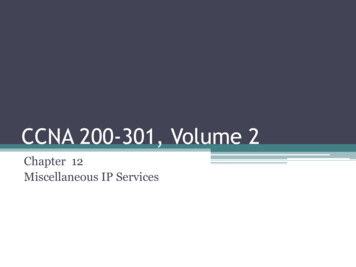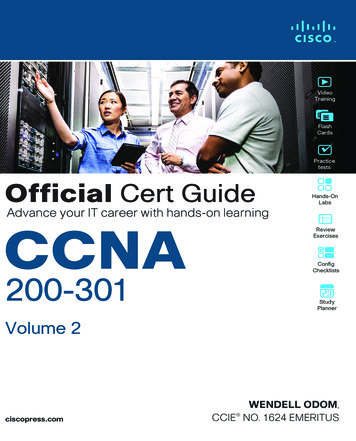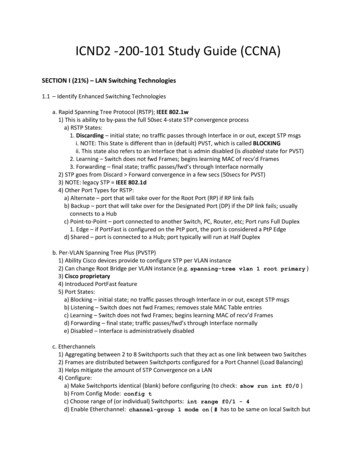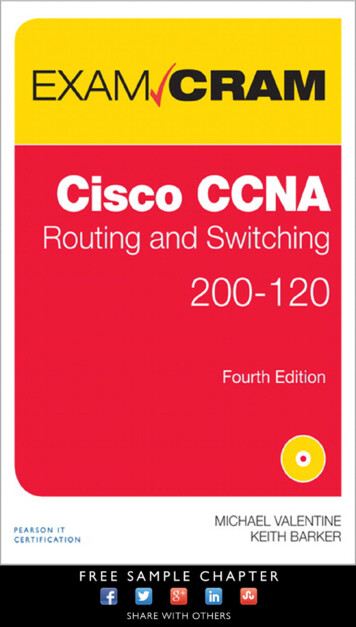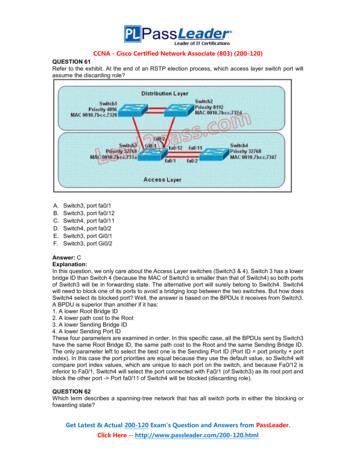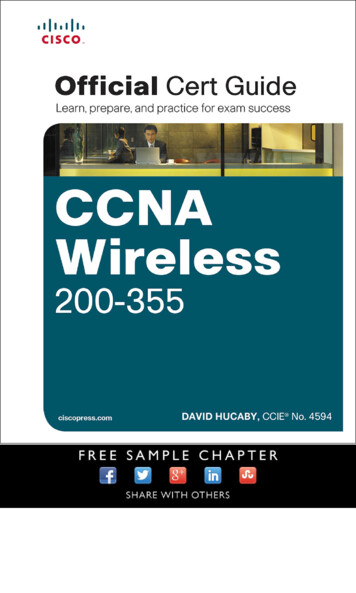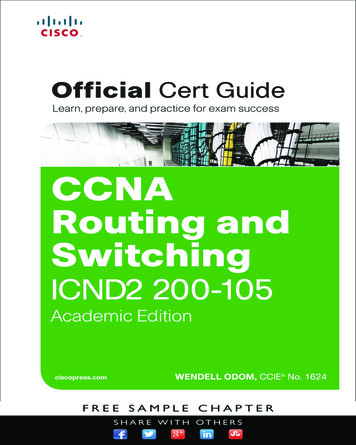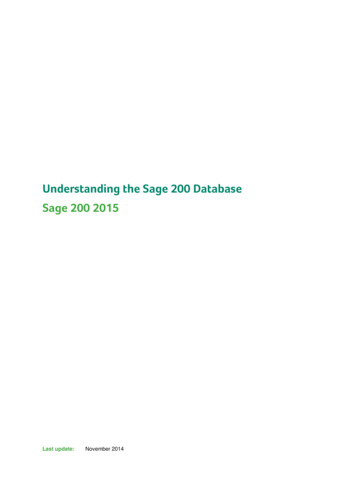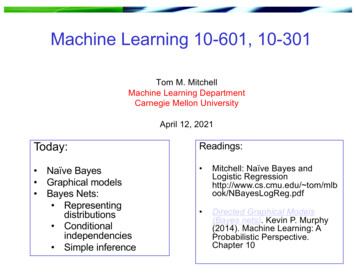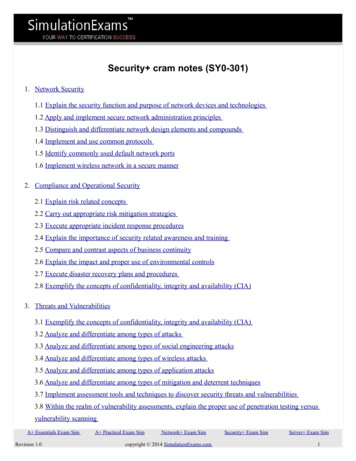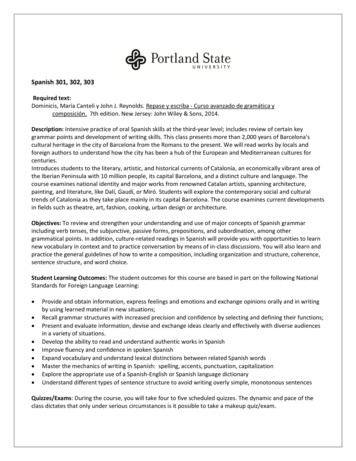
Transcription
CCNA 200-301, Volume IChapter 1Introduction to TCP/IPNetworking
Objectives Perspective on Networking TCP/IP Networking Model Data Encapsulation Terminology
Two Major Branches of NetworkingEnterprise Network
TCP/IP Networking ModelHistorical Progression: Proprietary Modelsto Open TCP/IP
The Two TCP/IP Networking Models
TCP/IP Architectural Model andExample ProtocolsTCP/IP Architecture LayerExample ProtocolsApplicationHTTP, POP 3, SMTPTransportTCP,UDPInternetIP, ICMPData Link & PhysicalEthernet, 802.11 (Wi-Fi)TCP/IP
HTTPBasic Application Logic to Get a Web Page
HTTP (continued)HTTP Get Request, HTTP Reply, and oneData-Only Message
TCP/IP Transport LayerTCP Error-Recovery Services as Provided toHTTP
Same-Layer and Adjacent-LayerInteraction
Postal Service Forwarding (Routing)Letters
Simple TCP/IP Network
Basic Routing Example
EthernetLarry Using Ethernet to Forward an IP Packet to Router R1
Five Steps of Data Encapsulation:TCP/IP
The letters LH and LT stand for link header and link trailer, respectively, and refer to the data link layer header and trailer.Perspective on Encapsulation and“Data”The letters LH and LT stand for link header and linktrailer, respectively, and refer to the data link layerheader and trailer.
OSI Networking ModelOSI Model Compared to the Two TCP/IP Models
OSI Reference Model Layer DefinitionsLayerFunctional Description7Application layer. This layer provides an interface between the communicationssoftware and any applications that need to communicate outside the computer onwhich the application resides. It also defines processes for user authentication.All6 People54Presentation layer. This layer’s main purpose is to define and negotiate dataformats, such as ASCII text, EBCDIC text, binary, BCD, and JPEG. Encryption isalso defined by OSI as a presentation layer serviceSeem Session layer. This layer defines how to start, control, and end conversations(called sessions). This includes the control and management of multiplebidirectional messages so that the application can be notified if only some of aseries of messages are completed. This allows the presentation layer to have aseamless view of an incoming stream of data.ToTransport layer. This layer’s protocols provide a large number of services, asdescribed in Chapter 5, “Fundamentals of TCP/IP Transport and Applications.”Although OSI Layers 5 through 7 focus on issues related to the application, Layer4 focuses on issues related to data delivery to another computer (for instance,error recovery and flow control).
OSI Reference Model Layer Definitions(ContinuedLayerFunctional Description3 NeedNetwork layer. This layer defines three main features: logical addressing,routing (forwarding), and path determination. Routing defines howdevices (typically routers) forward packets to their final destination.Logical addressing defines how each device can have an address that canbe used by the routing process. Path determination refers to the workdone by routing protocols to learn all possible routes, and choose the bestroute.2 DataData link layer. This layer defines the rules that determine when a devicecan send data over a particular medium. Data link protocols also definethe format of a header and trailer that allows devices attached to themedium to successfully send and receive data1ProcessingPhysical layer. This layer typically refers to standards from otherorganizations. These standards deal with the physical characteristics ofthe transmission medium, including connectors, pins, use of pins,electrical currents, encoding, light modulation, and the rules for how to
OSI Reference Model Example Devicesand ProtocolsLayer NameProtocols andSpecificationsDevicesApplication, presentation,session (Layers 5–7)Telnet, HTTP, FTP, SMTP, Hosts, firewallsPOP3, VoIP, SNMPTransport (Layer 4)TCP, UDPHosts, firewallsNetwork (Layer 3)IPRouterData link (Layer 2)Ethernet (IEEE 802.3),HDLCLAN switch, wirelessaccess point, cablemodem, DSL modemPhysical (Layer 1)RJ-45, Ethernet (IEEE802.3)LAN hub, LAN repeater,cables
OSI Encapsulation and Protocol DataUnits
CCNA 200-301, Volume I Chapter 1 Introduction to TCP/IP Networking. Objectives Perspective on Networking TCP/IP Networking Model Data Encapsulation Terminology. Two Major Branches of Networking Enterprise Network. TCP/IP Networking Model. Historical Progression: Proprietary Models to Open TCP/IP . The Two TCP/IP Networking Models. TCP/IP Architectural Model and Example
